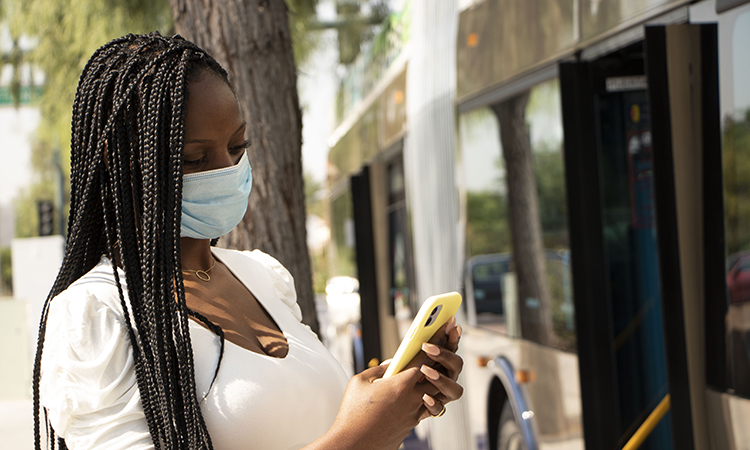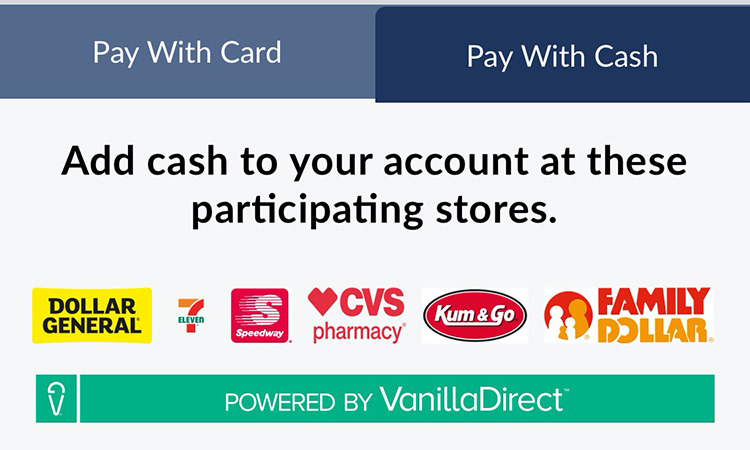Expanding transportation equity in Las Vegas through fare payment options
- Like
- Digg
- Del
- Tumblr
- VKontakte
- Buffer
- Love This
- Odnoklassniki
- Meneame
- Blogger
- Amazon
- Yahoo Mail
- Gmail
- AOL
- Newsvine
- HackerNews
- Evernote
- MySpace
- Mail.ru
- Viadeo
- Line
- Comments
- Yummly
- SMS
- Viber
- Telegram
- Subscribe
- Skype
- Facebook Messenger
- Kakao
- LiveJournal
- Yammer
- Edgar
- Fintel
- Mix
- Instapaper
- Copy Link
Posted: 12 January 2021 | MJ Maynard | No comments yet
MJ Maynard, CEO of RTC Southern Nevada, discusses why contactless payment systems are not always the best for everyone, and explains how her authority is making sure everybody has the means to ride RTC in Las Vegas.


Passengers in Las Vegas can now pay for contactless bus tickets using cash at participating stores.
While access, equity and inclusion have always been priorities for many transportation agencies and companies, the COVID-19 pandemic has sharpened that focus over the past year. It became abundantly clear that transportation equity and access is more important than ever, especially for essential workers who cannot work from home.
The Regional Transportation Commission of Southern Nevada (RTC) is the public transit, roadway planning and funding, and traffic management agency for the greater Las Vegas metropolitan area, which is home to 2.3 million residents and attracts tens of millions of visitors each year. Despite the severe drop in ridership we experienced during the onset of the pandemic, we still saw 56 million passenger trips in 2020.
While we traditionally think of transportation equity and inclusion to mean physical access to different mobility options, such as direct access to the public transit system or ridesharing network, we also need to consider equity regarding payment options. The harsh reality is that many of our transit customers are either underbanked, meaning they do not have regular access to financial services such as a bank or credit card, or unbanked, meaning they do not have any access at all to financial services.
The harsh reality is that many of our transit customers are either underbanked, or unbanked..”
Prior to the pandemic, we sought ways to help our customers who are underbanked or unbanked and embarked on a project to offer the option to purchase bus passes on their mobile devices using cash. The RTC recently launched this new feature on our smartphone app, rideRTC, which allowed us to use technology to provide an innovative option to our customers, while expanding equity, access and inclusion in the process.
Las Vegas Area transit riders
In order to better serve our customers and to tailor services that meet their needs, we regularly engage with them through surveys, events and other communication methods to understand who they are.
According to the last satisfaction survey from fall 2019, we know that:
• 47 per cent of our transit riders skew on the younger side between 18-39 years old.
• 71 per cent of our customers have an annual income at or below $50,000.
• A majority, 56 per cent, identify as Black or Latinx.
• 90 per cent own cell phones, while 81 percent own a smart cell phone.
• 43 per cent use the rideRTC app for trip planning.
• 62 per cent prefer to pay their fare with cash or purchase a paper pass.
A sizable number of survey respondents indicated using rideRTC to plan their trips, but an even greater number who are aware of the app choose to purchase their passes through another method. Although many people have smartphones, mobile data access and credit card ownership is less guaranteed.
Despite introducing our smartphone app rideRTC over four years ago, more than 60 per cent of RTC customers continue to pay their fare with cash. We wanted to equalise fare payment options and provide these customers with the same opportunity for a contactless way to pay. Industries like hospitality and airlines already offer contactless options for customers to check in to their rooms or flights, and others will follow suit. This is the future, and we need to adapt to it.


RTC passengers will be able to find participating stores with the rideRTC app.
Expanding payment access and equity
As a transportation agency, one of our top priorities is to connect people to opportunities and services, which depends greatly on expanding equity and access. We design our systems to ensure we accommodate the needs of our transit riders, including the underserved, minorities and low-income residents. We are also mindful that many of our customers may be underbanked or unbanked.
A 2019 report from the Federal Reserve Board says that 16 per cent of US adults are underbanked while six percent of adults are unbanked. That’s nearly one-quarter of the adult population without steady or any access to financial services. A similar study by the US Federal Deposit Insurance Corporation (FDIC) in 2017 found that 25.1 per cent of Nevada households are underbanked and 6.1 per cent are unbanked – higher than the national average.
When we dig deeper into the data, racial disparity is apparent, as the unbanked and underbanked are more likely to have low income, less education or be in a racial or ethnic minority group, according to the 2019 Federal Reserve Board study. In terms of race and ethnicity, 35 per cent are Black and 23 per cent are Latinx, compared to only 11 per cent of whites.
When we dig deeper into the data, racial disparity is apparent…”
Many unbanked and underbanked families report using cash as their primary method of paying monthly bills. If we limit payment options to only those with a debit or credit card, we are essentially excluding a significant portion of the population who may be able to pay for transportation service – just not in the form that we are requesting.
Using technology and innovation
Considering our customer data and Nevada’s higher-than-average number of unbanked and underbanked households, it was apparent that enabling a cash payment option on our app would be an important and beneficial initiative. Offering customers the opportunity to load their rideRTC accounts while also paying utility bills with cash at a participating vendor can help ease the burden when it comes to using our transit system.
We worked closely with our app platform provider Masabi and global payments technology company InComm Payments over the past eight months to build this feature and bring it to fruition.
Retailers across Nevada who have access to InComm Payments’ VanillaDirect payment platform can now accept cash from passengers and load funds into their accounts by scanning a barcode from the user’s rideRTC app. The user can then buy and store RTC bus passes using the app at any time and from anywhere. With nearly 350 participating locations across the Las Vegas Valley, convenience is the name of the game.
This new feature allows for a quick, convenient and contactless way to ride and couldn’t have come at a better time amidst a public health crisis. Those who choose to load cash onto their rideRTC accounts can board and scan their phones without coming into contact with the farebox, making the environment safer for public transportation customers. More importantly, we’ve levelled the playing field for customers who rely on cash by offering them the same opportunity as those who have access to a debit or credit card.
Since launching less than a month ago, we’ve seen customers trying out the new service and expect usage to increase dramatically over the coming months as we continue to raise awareness of this option. We are extremely proud to offer a service that helps expand equity and access to the Las Vegas area transportation system. But we’re not done yet. We are exploring other options within our existing fare structure to ensure that we are being equitable and inclusive with our mobility services.
Those of us in the transportation industry must remember that accessibility is not limited to simply being able to physically get on the bus, car or train, but also how customers can pay for the service. Industry leaders can help increase equity and inclusion by providing customers with various methods to pay their fare.
Biography
As Chief Executive Officer of the Regional Transportation Commission of Southern Nevada (RTC), M.J. Maynard connects 2.2 million Nevadans to economic, educational, and recreational opportunities as well as more than 43 million tourists to one-of-a-kind attractions in the entertainment capital of the world.
She leads the only agency in the United States that is responsible for a region’s public transit system, traffic management, roadway design and construction funding, and transportation and overall planning efforts – all under one roof.
Related topics
COVID-19, Passenger Accessibility, Passenger Experience, Public Transport, Ticketing & Payments, Transport Governance & Policy
Related modes
Bus & Coach
Related cities
Las Vegas
Related organisations
Regional Transportation Commission of Southern Nevada (RTC)
Related people
MJ Maynard







